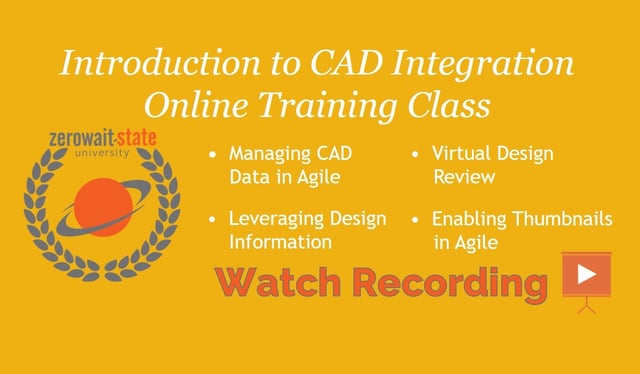Now that we know why we should measure, we can focus on what we should measure. As mentioned in previous articles, broad standards like time-to-market and increases in profitability are difficult to quantify. There are a number of elements to each of these that can be impacted by PLM, but ultimately there are other things that also contribute to each of these.
Understanding what PLM does can help us get a better hand on how we quantify the impact. Establishing a baseline is an important step in this process. We can't claim improvement unless we understand the status quo. This topic has been making the rounds on PLM blogs for some time and most LEAN methodologies address it as well. We need to look at the areas of impact for PLM and measure the areas in a company that will be affected to verify true value.
One of the basic functions of PLM is as a data vault. Most companies have product information scattered over multiple systems, and a true product record is an amalgamation of data from different types of media. The Bill of Material (BOM) for a product exists separately from the actual data files that depict the items listed on the BOM, and typically the data is owned and controlled by those that create it. This creates a problematic environment for users at a company. They are dependent on others or their experience or ingenuity to find data or they just expend time to recreate information that already exists. For most companies, labor is the biggest expense they have. Anything that can allow a company to do more with less should be considered very valuable.
Another low level, straightforward measurement centers on change management. Companies without PLM systems tend to struggle in this area. The problem areas tend to be the amount of time it takes to process change orders, the number of change orders and the timing of change orders. All of these areas can be very easily quantified. It should be a fairly simple exercise to determine how many change orders you have over a period of time. Measuring the time it takes to process change orders is a little more involved. You also have to take into account what type of change orders they are. Some changes are much more involved so you will have to normalize the data to take this into account. PLM is a communication tool and this allows more people to be involved in the product development process earlier than before. The big benefit of this is that the increase in input reduces the need for change orders. If manufacturing has early visibility into design information, they can provide input that typically would have been received after a release to manufacturing. PLM enables them to see the data earlier so this is how you reduce the number of change orders and when these change orders occur. PLM also automates and parallelizes the traditional serial approval and review processes. This is how you shorten the amount of time it takes to process a change order.
Measuring all of this is very useful and can reveal significant savings on a number of levels. Time is again the obvious one but material cost can also be affected by late change orders as products or components have to be scrapped. It can be tricky coming up with true figures for material cost but the time savings alone should be significant. This can lead to the shorter time-to-market and reduced cost benefits so often cited in industry reports. To fully leverage PLM's ability to optimize change management, companies need to fully understand the impact that changes have on a product development cycle in terms of cost and time. Once companies have assigned value to this area, then the true impact of PLM can be better appreciated.
In our next article we will spend some time on more advanced value drivers for PLM. These areas tend to be harder to quantify and prove, but drive significantly more return, so they tend to be worth the extra effort.
[Edit: repost from 2015]



